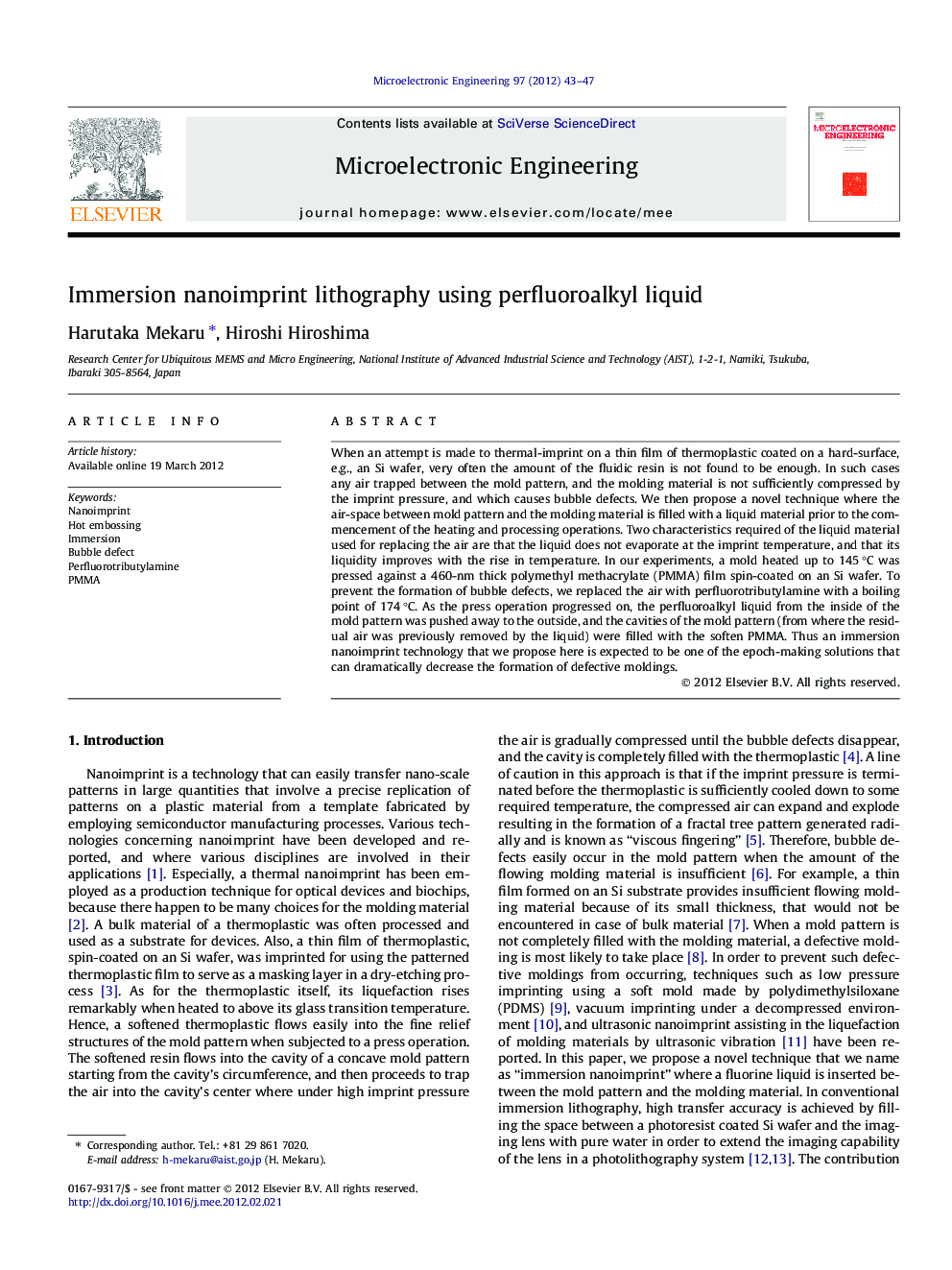| Article ID | Journal | Published Year | Pages | File Type |
|---|---|---|---|---|
| 544331 | Microelectronic Engineering | 2012 | 5 Pages |
When an attempt is made to thermal-imprint on a thin film of thermoplastic coated on a hard-surface, e.g., an Si wafer, very often the amount of the fluidic resin is not found to be enough. In such cases any air trapped between the mold pattern, and the molding material is not sufficiently compressed by the imprint pressure, and which causes bubble defects. We then propose a novel technique where the air-space between mold pattern and the molding material is filled with a liquid material prior to the commencement of the heating and processing operations. Two characteristics required of the liquid material used for replacing the air are that the liquid does not evaporate at the imprint temperature, and that its liquidity improves with the rise in temperature. In our experiments, a mold heated up to 145 °C was pressed against a 460-nm thick polymethyl methacrylate (PMMA) film spin-coated on an Si wafer. To prevent the formation of bubble defects, we replaced the air with perfluorotributylamine with a boiling point of 174 °C. As the press operation progressed on, the perfluoroalkyl liquid from the inside of the mold pattern was pushed away to the outside, and the cavities of the mold pattern (from where the residual air was previously removed by the liquid) were filled with the soften PMMA. Thus an immersion nanoimprint technology that we propose here is expected to be one of the epoch-making solutions that can dramatically decrease the formation of defective moldings.
Graphical abstractFigure optionsDownload full-size imageDownload as PowerPoint slideHighlights► We proposed removing a bubble defect by dispensing a perfluoroalkyl liquid onto a mold. ► The bubble defect in thermal nanoimprint occurs because of the air trapped into mold cavities. ► Perfluorotributylamine was chosen because it does not evaporate at the imprint temperature. ► An immersion nanoimprint technology was employed to pattern on a PMMA spin-coated Si substrate. ► We achieved a smooth molding surface which removed bubble defects in thermal nanoimprint.
